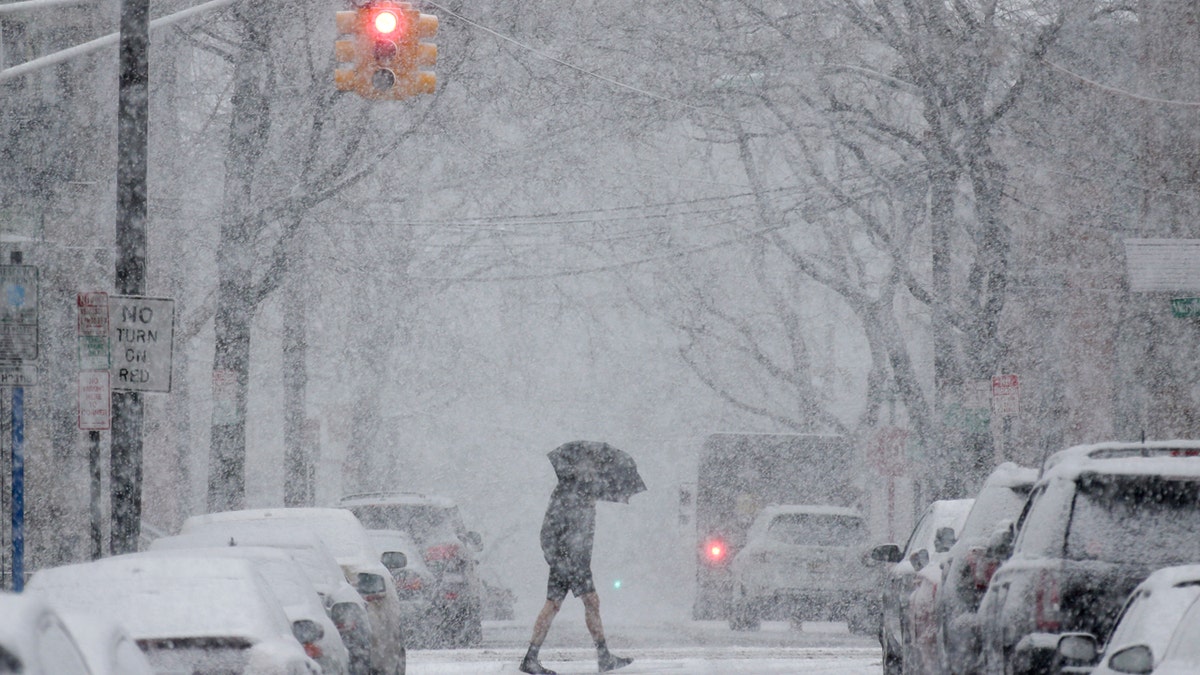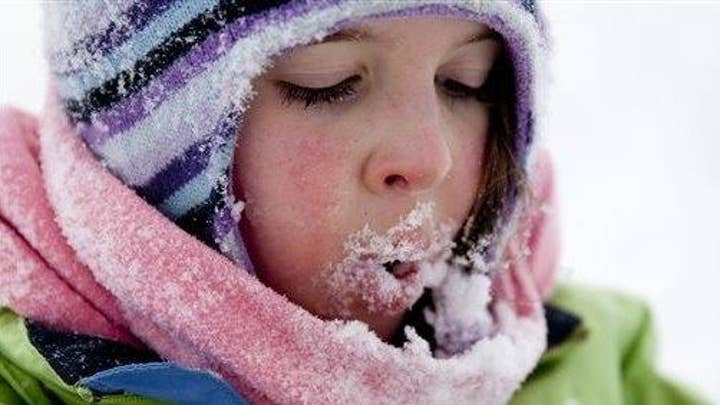Fox Nation’s ‘Valley Forge: Washington’s Winter Army’ documents the historic battle in 1777
‘Valley Forge: Washington’s Winter Army,’ narrated by conservative actor Kevin Sorbo, documents General Washington marching his Continental Army into the historic battle.
The Northern Hemisphere’s winter solstice is just one day away.
The shortest day of this year of 2021 will occur on Tuesday, Dec. 21, at 10:59 a.m. ET, and 7:59 a.m. PT.
It's the official start of what's called the astronomical winter.
On the winter solstice, we have the fewest hours of sunlight in the whole year.

A man is shown crossing the street during a snowstorm in Hoboken, N.J., in March 2018 in this photo. This year's winter solstice — the shortest day in the Northern Hemisphere — begins on Dec. 21, 2021. From there, the days will gradually grow longer. (AP Photo/Seth Wenig)
The winter solstice occurs annually on Dec. 21 or 22 — and from there, the days will start to grow longer.
Read on for a deeper dive into what happens during this astronomical phenomenon.
What is the winter solstice, anyway?
"The winter solstice marks the shortest day and longest night of the year," according to the National Weather Service.
"In the Northern Hemisphere, it occurs when the sun is directly over the Tropic of Capricorn, which is located at 23.5° south of the equator and runs through Australia, Chile, southern Brazil, and northern South Africa."
WINTER WEATHER 2021: WHAT DO FORECASTERS PREDICT?
The Northern Hemisphere, which includes the US, is tipped at its furthest point away from the sun when the winter solstice occurs, according to NASA.
Not everyone around the globe will experience this phenomenon on Dec. 21, of course. The Southern Hemisphere will have its summer solstice — the longest day of the year — instead.
Will I notice anything unusual on Dec. 21?
The sun will be at its lowest point in the sky around noon, Dr. Noah Petro of NASA’s Goddard Space Flight Center told Fox News previously.
The sun’s path during the day is "going to be the lowest you’ll ever see it," Dr. Jackie Faherty, a senior scientist and senior education manager in the department of astrophysics and department of education at the American Museum of Natural History, told Fox News previously about this phenomenon.
This includes where the sun sets, where it rises, and the highest point it reaches, she explained.
What else do I need to know about the winter solstice?
"The thing to celebrate on the solstice is that the days are starting to get longer," Petro also said.
The Northern Hemisphere's summer solstice will take place on Tues., June 21.
"Although the winter solstice marks the shortest daylight period in the Northern Hemisphere, it’s not the day of the latest sunrise or earliest sunset," NASA says. "Most places in the mid-latitudes see their earliest sunset two weeks before the solstice, while the latest sunrise is not until early January."
FOR MORE LIFESTYLE CONTENT FROM FOX NEWS, CLICK HERE
When does spring of 2022 start, by the way?
The first day of spring, also called the vernal equinox, will occur in the Northern Hemisphere on Sun., March 20, 2022, at 11:33 a.m. ET/8:33 a.m. PT.



